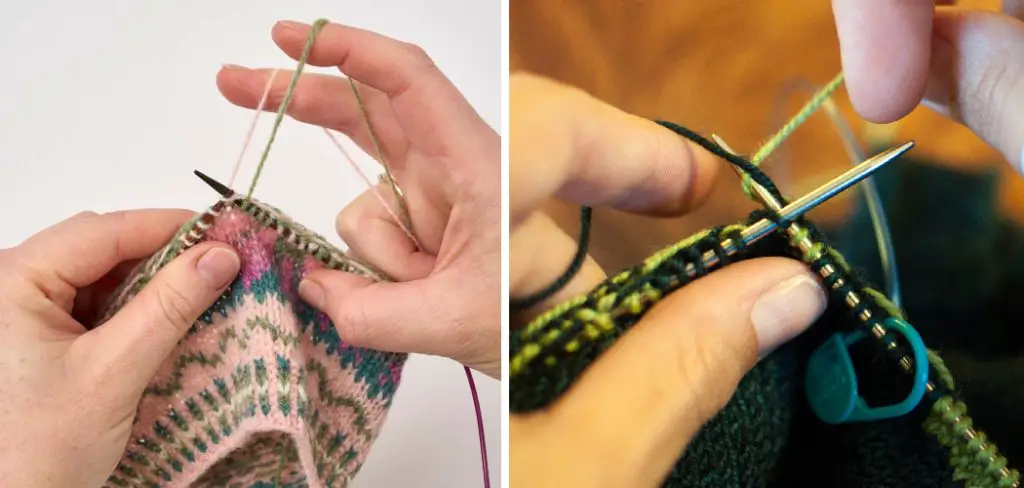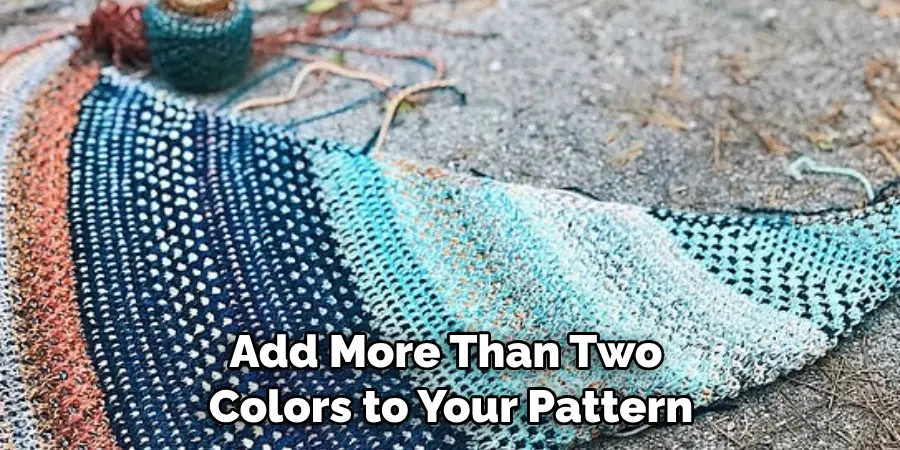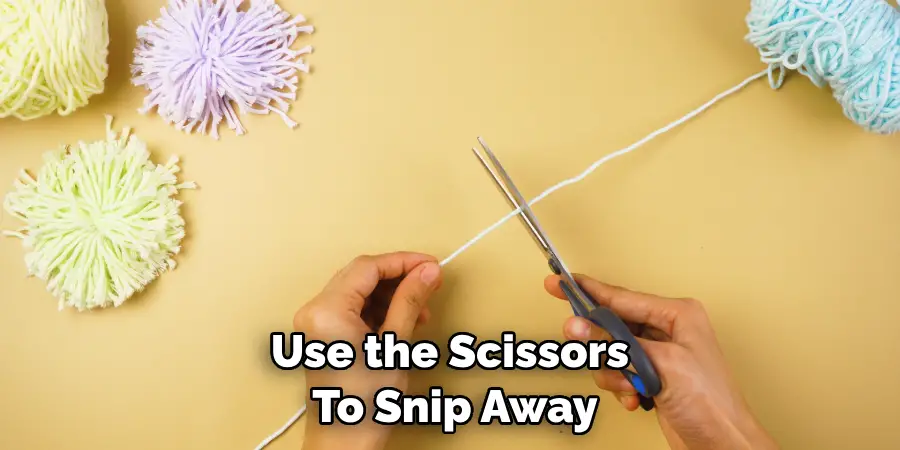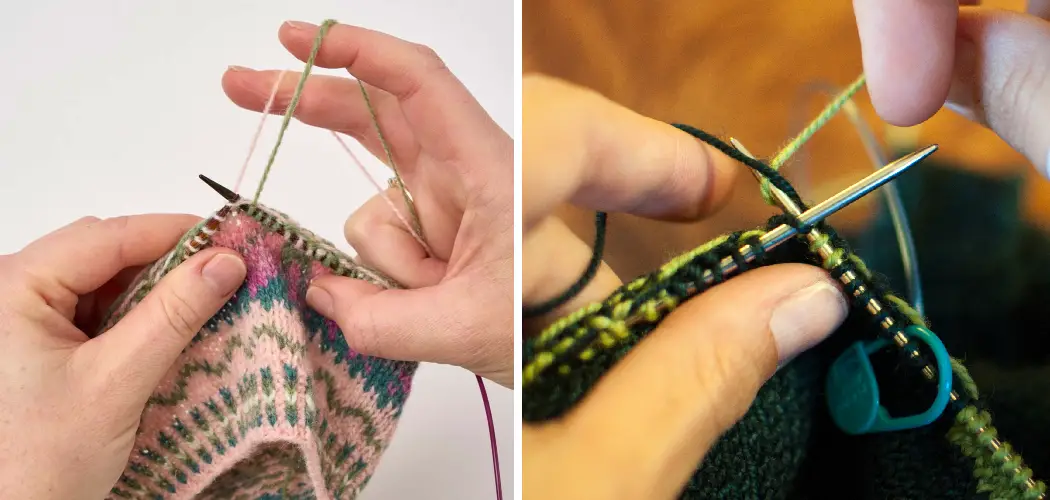Are you ready to take on a new challenge and become a master of knitting? Sure, following basic patterns is great, but if you really want to amp up your knitting game, it’s time to learn how to catch floats knitting floats knitting! It may sound complicated but don’t worry because we are here to show you the ins and outs of tackling this technique.

You will be an expert in no time with our comprehensive guide on floating stitches and catches. This exciting approach to knitting will have all your projects looking clean and professional. With just a few tools, several colorful strands of yarn, and some patience – you’ll be able to earn admiration from all as a pro knitter! So buckle up for the journey ahead!
Needed Materials
Given below is a list of necessary materials which you will need to prepare before getting started.
- Yarn (in Two or More Colors)
- Knitting Needles
- Tapestry Needle
- Scissors
- Tape Measure
- Paper and Pen
10 Step-by-step Guidelines on How to Catch Floats Knitting
Step 1: Choose the Yarn Colors
This will be the foundation of an eye-catching pattern that is sure to stand out. It is important to use a light color yarn to ensure that your stitches will stand out against the darker-colored yarn.
But if you are feeling extra creative, feel free to use even more colors! It is all about you experimenting and creating something unique. But if you are a beginner, it is best to start off with two yarn colors. This will help you understand the technique before attempting more complex designs.

Step 2: Begin Knitting with Your First Color
Using the knitting needles, begin your pattern by knitting with the first color of yarn. Once that role has been completed, move on to the next one. It is important to remember that this process will help you understand the basic mechanics of knitting before attempting more complex techniques such as catching a float. You can also experiment with different types of stitches to create a unique design.
Step 3: Add in the Second Color
At this point, you will begin incorporating the second color of yarn into your pattern. To do this, simply insert your needle in the stitches with the first color, and then wrap around the second color. Keep in mind that both colors must be held in your left hand while the right one is handling the knitting needles. But be sure to keep an eye on your tension, as this can vary depending on the yarn being used.
Step 4: Add as Many Colors as You Desire
If you’d like to add more than two colors to your pattern, go ahead! As long as you make sure to carry the yarn colors in your left hand, you can keep adding more. You can even create some fun color combinations with this technique. It’s all about experimenting and seeing what looks best! However, no matter how many colors you add to your pattern, be sure to keep the tension consistent.
Step 5: Start Floating Your Stitches
This is when things start getting fun! Start floating your stitches by holding each yarn color over different rows while knitting with a third color. To prevent tangles, it’s best to lay each color in separate strands when you aren’t using it.
It is important to make sure that you are not wrapping the yarns around each other, as this will create a mess. But if you want to challenge yourself, you can try wrapping them together!

Step 6: Put Floats in Place
Once the desired number of rows has been knit, you can now begin placing your floats into place. Start by taking the yarn colors in your left hand and looping them around the stitches that need to be floated over. Make sure to keep the tension of each stitch even throughout the process. Otherwise, you may end up with a sloppy pattern.
Step 7: Follow the Pattern
Now it’s time to follow your pattern and knit with a different color. When you do, make sure that the floats are being pulled along as you go. This will ensure that they stay in place without any issues. It is also important to keep an eye on the tension of each float so that it is in line with the other stitches.
Step 8: Catch the Floats
Once you have knitted a few rows over the floats, it’s time to catch them. This is done by inserting your needle under each of the stitches that were being floated over and then bringing them up through the fabric of your project. But be sure to keep the tension consistent throughout this process as well.
Step 9: Keep Your Tension Even
As you work through each stitch, make sure to keep the tension even. This will ensure that your pattern looks neat and no stitches are too loose or tight. Although the tension of each stitch does not have to be exact, it is important to keep them relatively even. Otherwise, you may end up with an uneven pattern that does not look cohesive.
Step 10: Finish Up with Scissors and Tapestry Needle
When you’re all done, use the scissors to snip away any excess yarn and then take out the tapestry needle to weave in all of your ends. This will ensure that everything is neat and finished off and ready for display! Always make sure to double check that all of your stitches are in place and the tension is even before you move on.

Now that you know how to catch floats knitting, why not get creative and explore new patterns? We guarantee that with practice, you’ll become an expert in no time!
Following these steps correctly will give you a clean, professional-looking project that makes a statement! You can show off your newly acquired skill to all of your friends and family. They’ll be amazed by how intricate and complex the pattern looks. With enough practice and patience, you’ll have mastered catching floats knitting in no time at all. Have fun!
Tips
- Take Your Time and Be Patient While Knitting. It’s Important to Keep the Tension in Each Stitch Even for a Neat Finish.
- When You Are Done, Make Sure to Snip Away Any Excess Yarn and Weave in All of the Ends With Your Tapestry Needle.
- If You Get Confused About What to Do Next, Take a Break and Go Back With a Clear Head.
- Have Fun! Knitting Should Be Enjoyable. Experiment With Different Colors and Patterns in Order to Find Your Own Personal Style.
With this comprehensive guide on how to catch floats knitting, you’ll be able to confidently tackle any pattern or project! Try it out today and see the results for yourself. Enjoy!
Need some help finding a pattern or yarn? We’ve got you covered! Our online store has an extensive collection of supplies, tools, and even kits so you can get the perfect materials for your projects. So don’t wait any longer – start knitting today with our store!
Frequently Asked Questions
Q: How Do I Know if My Tension Is Even?
A: Make sure to pay attention to the stitches as you knit and adjust your tension accordingly. If the stitch looks too tight or loose, that means that you must adjust accordingly. Another way to check is by counting your stitches every few rows to ensure all of them are even in size.
Q: Is It Possible to Use More than Three Colors of Yarn?
A: Absolutely! You are free to use as many colors as you desire. Just make sure that all of the yarns are held in your left hand and laid out neatly when not in use. This will help avoid any tangles or knots from forming while knitting.

Q: Is it Possible to Catch Floats on One Side Only?
A: Yes, you can catch floats on one side only. However, it’s important to keep in mind that the pattern will look a little different compared to when both sides are done. If this is something that appeals to you, go ahead and give it a try!
Q: Is There an Easier Way to Do This?
A: While there isn’t necessarily an ‘easier’ way, there are certainly some tricks that can help. For example, you can use stitch markers or change needle sizes to make catching floats easier. Additionally, if you’re just getting started, it might be a good idea to practice on a swatch before attempting an entire project. With enough practice and experimentation, you’ll be able to find the right methods for you!
Conclusion
Cathing floats in knitting can be a tricky yet rewarding venture. As long as you take your time, pay attention to the yarn, and keep track of each step of the process, you’ll soon have many successes catching floats.
Remember that although at first it might seem complicated, with a little practice and patience anyone can make beautiful and unique pieces from creative projects like this one. So give it a try – you won’t ever regret mastering such a beautiful craft as catching floats knitting! Thanks for reading this article on how to catch floats knitting.

